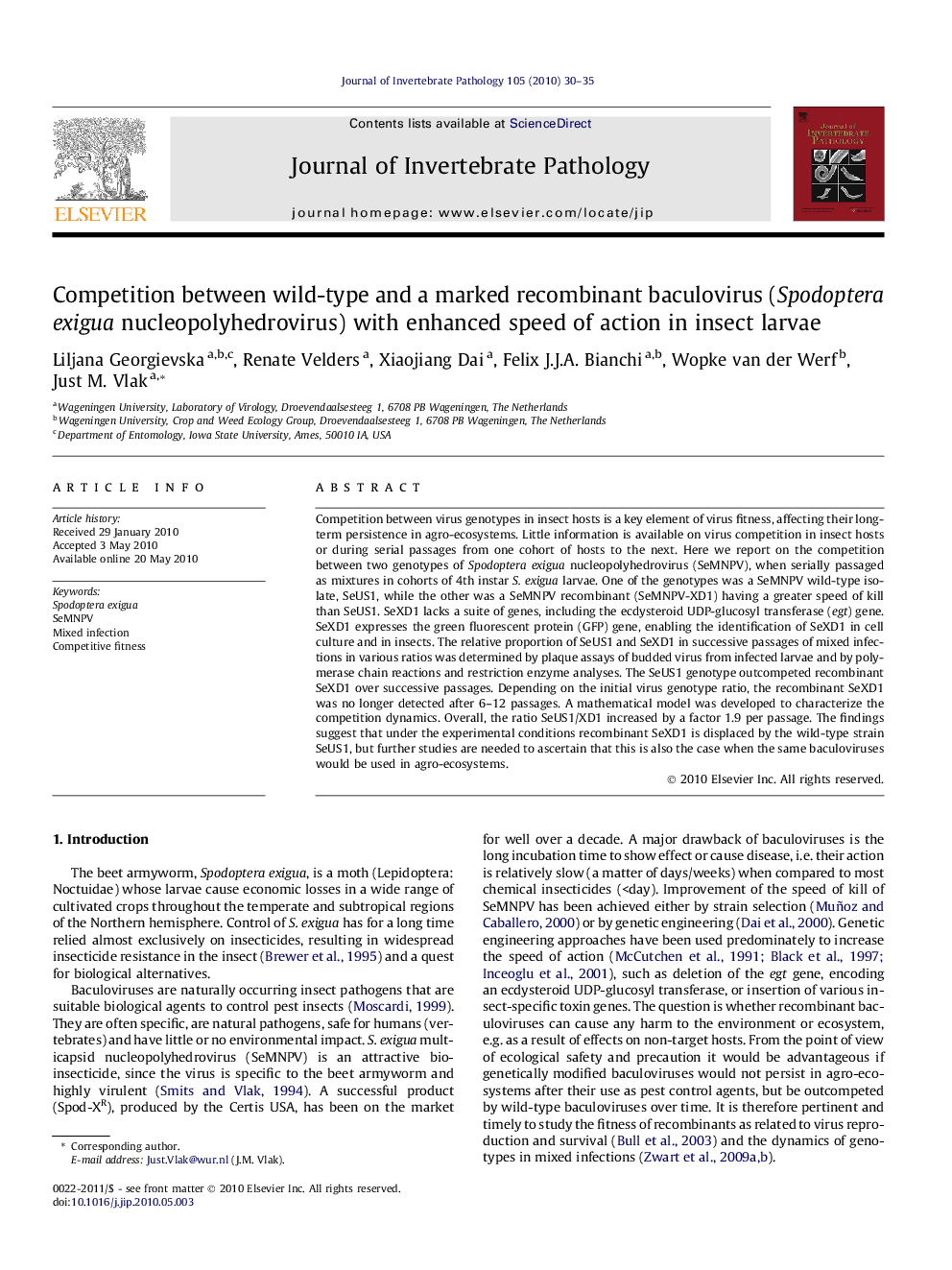| Article ID | Journal | Published Year | Pages | File Type |
|---|---|---|---|---|
| 4558268 | Journal of Invertebrate Pathology | 2010 | 6 Pages |
Abstract
Competition between virus genotypes in insect hosts is a key element of virus fitness, affecting their long-term persistence in agro-ecosystems. Little information is available on virus competition in insect hosts or during serial passages from one cohort of hosts to the next. Here we report on the competition between two genotypes of Spodoptera exigua nucleopolyhedrovirus (SeMNPV), when serially passaged as mixtures in cohorts of 4th instar S. exigua larvae. One of the genotypes was a SeMNPV wild-type isolate, SeUS1, while the other was a SeMNPV recombinant (SeMNPV-XD1) having a greater speed of kill than SeUS1. SeXD1 lacks a suite of genes, including the ecdysteroid UDP-glucosyl transferase (egt) gene. SeXD1 expresses the green fluorescent protein (GFP) gene, enabling the identification of SeXD1 in cell culture and in insects. The relative proportion of SeUS1 and SeXD1 in successive passages of mixed infections in various ratios was determined by plaque assays of budded virus from infected larvae and by polymerase chain reactions and restriction enzyme analyses. The SeUS1 genotype outcompeted recombinant SeXD1 over successive passages. Depending on the initial virus genotype ratio, the recombinant SeXD1 was no longer detected after 6-12 passages. A mathematical model was developed to characterize the competition dynamics. Overall, the ratio SeUS1/XD1 increased by a factor 1.9 per passage. The findings suggest that under the experimental conditions recombinant SeXD1 is displaced by the wild-type strain SeUS1, but further studies are needed to ascertain that this is also the case when the same baculoviruses would be used in agro-ecosystems.
Related Topics
Life Sciences
Agricultural and Biological Sciences
Ecology, Evolution, Behavior and Systematics
Authors
Liljana Georgievska, Renate Velders, Xiaojiang Dai, Felix J.J.A. Bianchi, Wopke van der Werf, Just M. Vlak,
